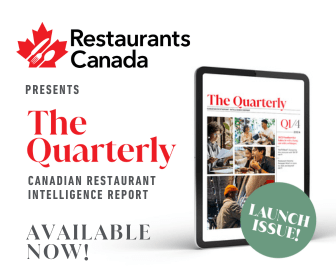Restaurants Canada is calling on all levels of government to help foodservice businesses remain viable as they ramp up operations.
TORONTO — A new survey from Restaurants Canada has revealed that most foodservice businesses might not have enough cash flow to successfully reopen their doors to diners.
As jurisdictions across the country move forward with lifting emergency measures, restaurants will need more support remaining viable until they are on a path to full recovery.
Survey reveals most restaurants will struggle to resume dine-in operations
About seven out of 10 survey respondents said they are either very or extremely worried that their business won’t have enough liquidity to pay vendors, rent and other expenses over the next three months.
While the Canada Emergency Commercial Rent Assistance (CECRA) program might provide some restaurants with relief, rent obligations continue to be a challenge for many:
- At least one out of five independent restaurant operators are dealing with a landlord who is not willing to provide rent relief, either through the CECRA program or some other arrangement.
- 14 per cent of independent restaurants haven’t been able to pay rent for April and nearly 20 per cent aren’t able to pay rent for May, despite not having an agreement from their landlord to postpone those payments.
Restaurants Canada is calling for solutions to support reopening
Restaurants Canada has published an open letter calling on all levels of government to help foodservice businesses remain viable as they reopen their doors to diners and ramp up operations.
In the letter, Restaurants Canada President and CEO Shanna Munro commends the country’s restaurateurs for their responsiveness and innovation throughout the COVID-19 pandemic before calling for more government support: “The creativity and resiliency of our industry won’t be enough to prevent widespread permanent closures as restaurants continue to struggle with insufficient cash flow and insurmountable debt.”
The letter goes on to urge further action in the following areas where restaurants continue to need support to have a fighting chance at survival:
- Commercial tenant protections and rent relief. While the CECRA program responds to one of the greatest challenges for restaurants, many will be unable to secure any protection or relief through this mechanism, through no fault of their own. A broader rent relief program is needed to capture businesses that have experienced a significant decline in sales but do not meet the current qualifying threshold. Commercial tenant protections also continue to be needed for those not benefiting from this program to relieve pressure while all stakeholders come to the table to develop immediate and long-term solutions. Some provinces, like New Brunswick and Nova Scotia, have already taken action on this front. Continued leadership is needed from the federal government to encourage other jurisdictions to adopt non-eviction policies.
- Help with cash flow and rising debt levels. Most restaurants are small and medium-sized businesses that were already operating with razor thin profit margins before COVID-19. With little-to-no sales revenue coming in for most foodservice businesses, many have already depleted their reserve funds, or soon will. Existing measures may need to be expanded and new solutions continue to be welcomed to ensure restaurants will have enough working capital to reopen their doors. Due to the perishable nature of their inventories, many suffered unrecoverable losses when physical distancing measures began and will also need support to restock as they reopen.
- Assistance with labour costs. While the federal government’s 75 per cent wage subsidy is helping some restaurants keep staff on payroll, those that are now preparing to reopen are concerned about being able to access this support in the months ahead. While further provincial assistance is also being sought, the federal government could send a welcomed signal with an extension of the Canada Emergency Wage Subsidy (CEWS) program by a few months.
About the Restaurants Canada survey
Conclusions cited above are based on responses to a Restaurants Canada survey conducted between May 1 and May 5, 2020. Restaurants Canada received a total of 890 completed surveys from foodservice operators across Canada, representing 11,965 locations (as many respondents belong to multi-unit businesses). Canada’s commercial foodservice industry is made up of 97,500 establishments, including full-service restaurants, quick-service restaurants, caterers and drinking places.
About Restaurants Canada
Restaurants Canada is a national, not-for-profit association advancing the potential of Canada’s diverse and dynamic foodservice industry through member programs, research, advocacy, resources and events. Before the start of the COVID-19 pandemic, Canada’s foodservice sector was a $93 billion industry, directly employing 1.2 million people, providing Canada’s number one source of first jobs and serving 22 million customers across the country every day. The industry has since lost 800,000 jobs and is on track to lose as much as $17 billion in sales over the second quarter of 2020 due to the impacts of COVID-19.
-30-
For more information, contact:
Marie-Christine Garon
Director
NATIONAL Public Relations
C: 514-409-0031
mcgaron@national.ca
Chloe Mills
Consultant
NATIONAL Public Relations
C: 416-459-3060
CMills@national.ca


